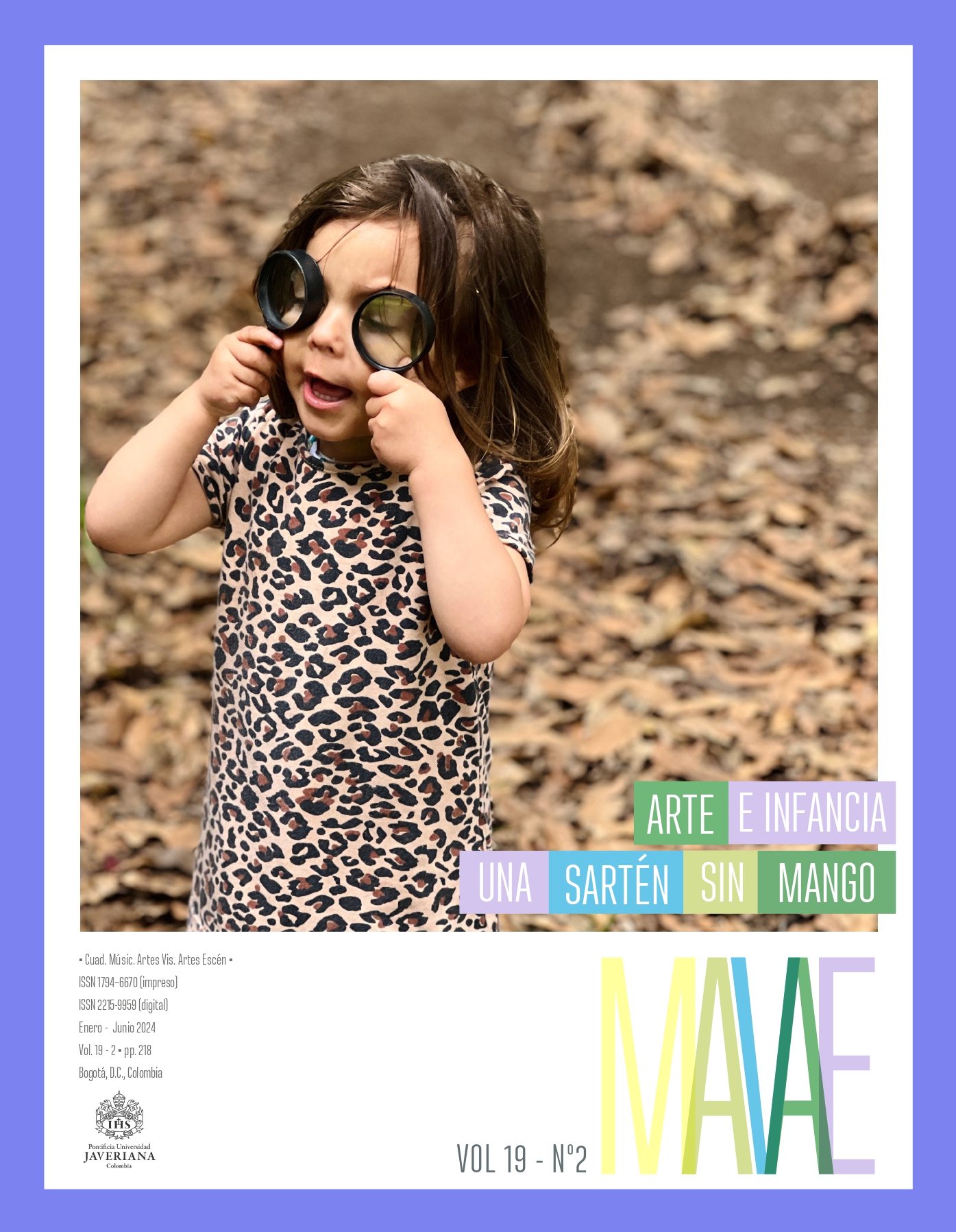I am in a vaporous state: a look at chaos in dance pedagogy for children
##plugins.themes.bootstrap3.article.details##
This article focuses on the question of chaos within the processes of artistic training for children, with emphasis on dance training. Dance is assumed as an expressive practice that, more than an aesthetic language, operates as a manifestation which activates the recognition of the body and the corporealities, and enhances the creative and symbolic capacities for the construction of the self and its participation in the community. Hence the value of chaos and its relevance in discourse and pedagogical perspectives for life. A study based on the experiences of the dance training project Danza Contexto is provided. Since 2010, their activities have been developed in different academic institutions in Bogotá, mainly in schools that are part of the Educational Alliance (Alianza Educativa). The analysis around the question regarding chaos is based on an approach that we have been developing since 2014, which we have called “a pedagogy of creativity”. From this approach principles such as play, questioning, context and impulse are raised. The development of this analysis is based on the participation of the people who have been part of the project (coordinators, teachers and facilitators, participating children), whose perceptions are reflected in pedagogical reports and activities recorded during the process.
pedagogía, danza, caos, juego, pregunta, infanciapedagogy, dance, chaos, play, question, childhoodpedagogia, dança, caos, jogos, pergunta, infância
Estrada, Rodrigo. 2003. “Momento de movimiento, o sobre la felicidad”. En Pensar con la danza, ed. por Carlos Eduardo Sanabria Bohórquez y Ana Carolina Ávila Pérez, 25-38. Bogotá: Alcaldía Mayor de Bogotá. https://issuu.com/plandanza/docs/pensar_con_la_danza
Gómez, Marco, Bibiana Carvajal, Carolina Van Eps, María Teresa Jaime, Alba González y Andrés Lagos. (2011-2014). Informes pedagógicos proyecto Danza Contexto. Bogotá: Fundación Formarte Danza y Música.
Hernández, Luisa. 2013. “Hannah Arendt: La pregunta por lo político como elemento constitutivo de la realidad”. En Reflexiones y
contextos de la educación artística en Colombia, 52-67. Bogotá: Universidad Nacional de Colombia.
Rancière, Jacques. 2003. El maestro ignorante. Barcelona: Laertes.
Rosales, Carolina, Juliana Atuesta, Diany Garnica y Carolina Ramírez. 2015. Cuerpo Presente: una pedagogía para la creatividad.
Bogotá: Idartes.
Sánchez, José A. 2016. “Nosotros: Marcos para instituir el plural”. En Componer el plural: Escena, cuerpo, política, ed. por Victoria Pérez
Royo, 31-53. Barcelona: Polígrafa. https://redit.institutdelteatre.cat/handle/20.500.11904/1123
Todorov, Tzvetan. 1987. La conquista de América: El problema del otro.México: Siglo XXI.

This work is licensed under a Creative Commons Attribution 4.0 International License.


